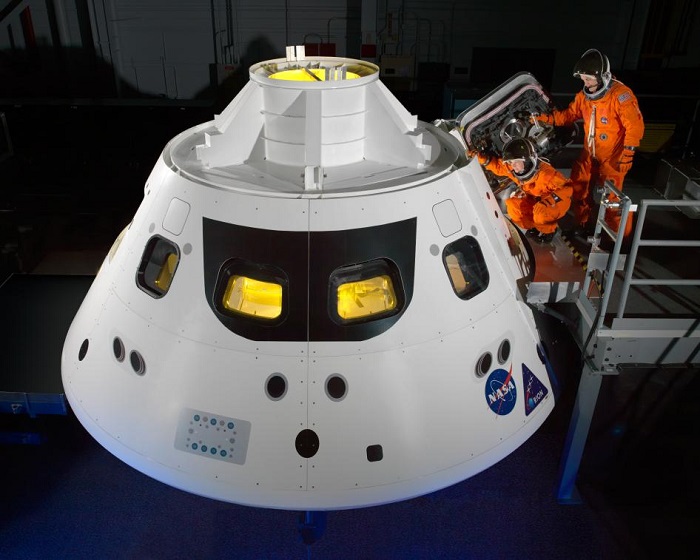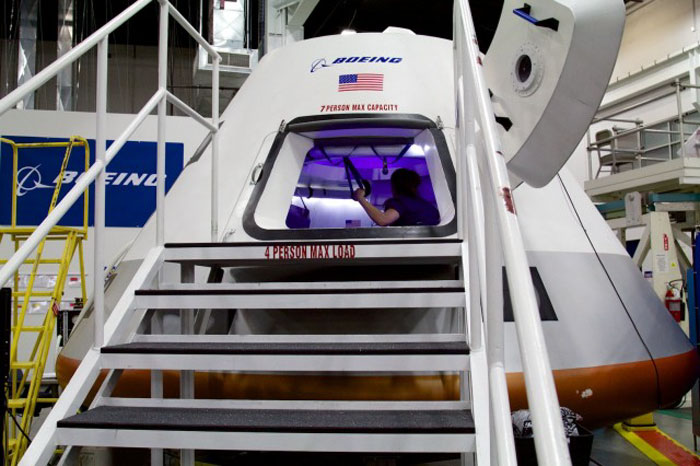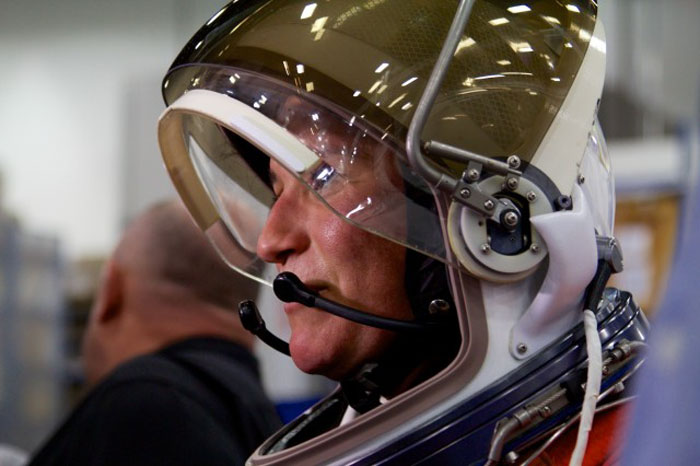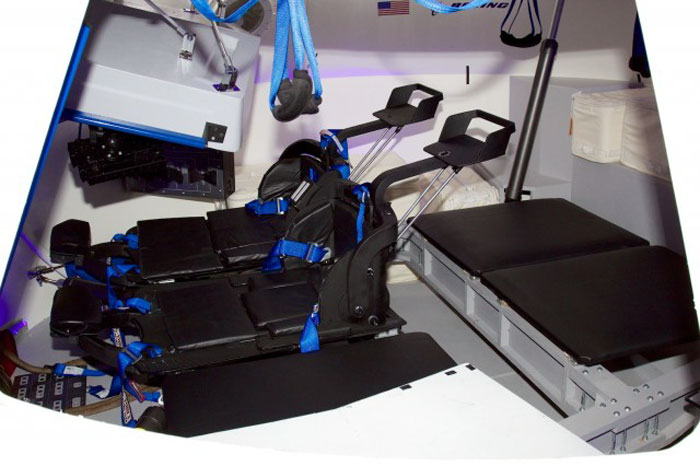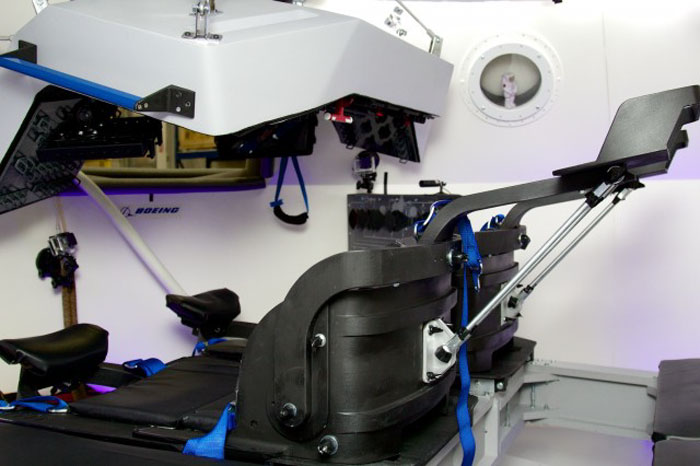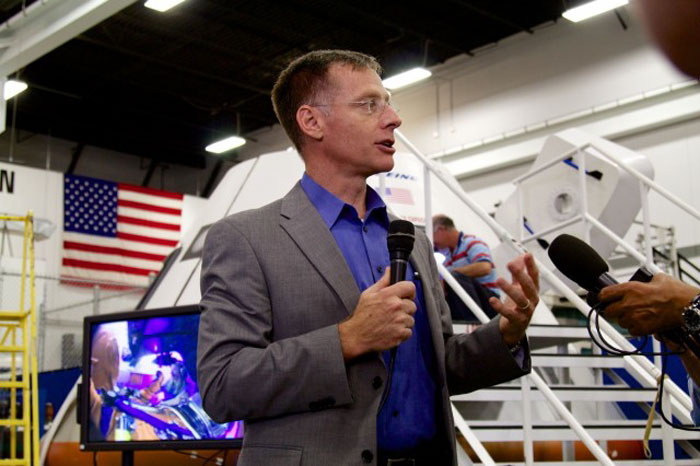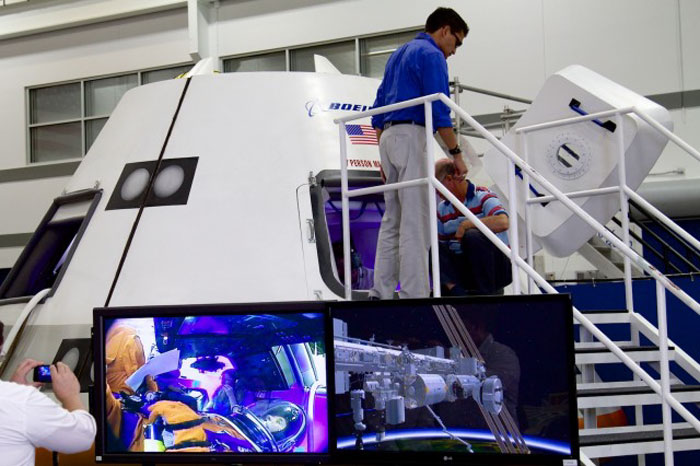Boeing VP (and former astronaut) Chris Ferguson.
.
"All the hardware switches you see in there are backup and are never intended to be used normally," Ferguson went on. The cockpit contains hardware switches for all critical systems—opening and closing valves, for example—but the intent is for the crew to be able to fly the spacecraft and do all of its operating tasks through touchscreens. Or to not have the crew do those tasks at all—CST-100 is being designed with the capability to operate totally autonomously, unlike the space shuttle. The latter lacked the ability to be fully operated remotely (though that capability was added in 2006 with the addition of a special cable).
I asked Ferguson about the practicality of operating touchscreens in gloves, since the crew would likely spend their launches and landings in the same orange ACES suits being used by Serena Auñón. He replied that Boeing is investigating including a capacitive mesh layer in the fingers of the suits, sort of along the same lines as the "iPad gloves" folks in northern climates can buy to keep their fingers warm while they poke at their gadgets (though, obviously, much more air-tight and spacesuit-y).
Getting there and back
Boeing plans to have the CST-100 hitch its initial rides into orbit on the Atlas V rocket, coupled with a Centaur upper stage. The combination has an excellent safety record, and Boeing (with assistance from its United Launch Alliance joint venture) will be taking the extra steps necessary to "man-rate" the rocket—that is, prove by NASA's stringent guidelines that the rocket is safe enough to carry humans, rather than the cargo it's currently used for.
Atlas V isn't the only rocket with which CST-100 will be compatible; Boeing is designing the capsule to work with a wide variety of launch systems, including rival SpaceX's Falcon 9 rocket. It's even possible that the CST-100 could be lofted by NASA's ultra-heavy-lift Space Launch System when or if it becomes available, though using that large a rocket to lift the CST-100 capsule would be overkill.
.
Watching astronaut Auñón on the monitors placed outside the mockup.
.
It's also necessary for Boeing to construct an escape system for the CST-100, so that the vehicle can keep its crew safe in the event of a launch abort. Early NASA capsules used Launch Escape Systems—a smaller rocket perched on the capsule's nose that could drag the capsule away from the rocket if something went wrong. The space shuttle lacked any notable external abort system, relying instead on fancy flying in the event of an emergency. CST-100 will have a "pusher escape system," using four rockets in the CST-100's service module to haul the capsule off and away from the launch vehicle. This design has the added benefit of also bringing some extra usable propellant to orbit; tower-based Launch Escape Systems are typically jettisoned after a certain point in the launch, but CST-100's abort engines and their propellant are also intended to be used for on-orbit maneuvering.
The commercial future
One of the odd facts about the "commercial space flight" push is that manned space flight has always been a "commercial" endeavor. Companies like Boeing have built every rocket and spacecraft that NASA has ever flown. The new efforts of Boeing, SpaceX, and others would be better characterized as commercially available or commercially funded (though even that isn't quite accurate, since NASA is splitting more than a billion dollars between Boeing, SpaceX, and Sierra Nevada Corporation for them to develop their CCiCap craft). Boeing is an old hand at the spaceship game—but being that old hand brings with it complications. When compared with a nimble, young company like SpaceX, Boeing can seem stodgy—even moribund, bound up in processes and meetings over even tiny details.
John Mulholland, Boeing's Vice President and Program Manager of Commercial Operations, acknowledged the difficulty Boeing faces with its approach. Still, he remained hopeful. "The nice thing is that we're coming into this from a position of experience," he said. "We understand the processes and what was done on previous human spaceflight designs, and having that knowledge, we can look at areas where we can drive efficiency, without sacrificing reliability or safety." He spoke further on a renewed focus within Boeing on both "decision velocity" and "decision stability"—making correct decisions quickly and sticking with things that work.
"I think we're doing a great job of it," continued John Elbon, who heads Boeing's entire Space Exploration group. "We aren't as vocal and out there as maybe some others, but Mulholland has put together a relatively small team to do this, and the effectiveness we're seeing relative to how much it's costing us to do this and how many hours it's taking is amazing."
The CST-100 is currently winging its way through the design review process. Boeing is hopeful that the capsule will fly in 2015 or 2016.
Quelle: ars technica
.
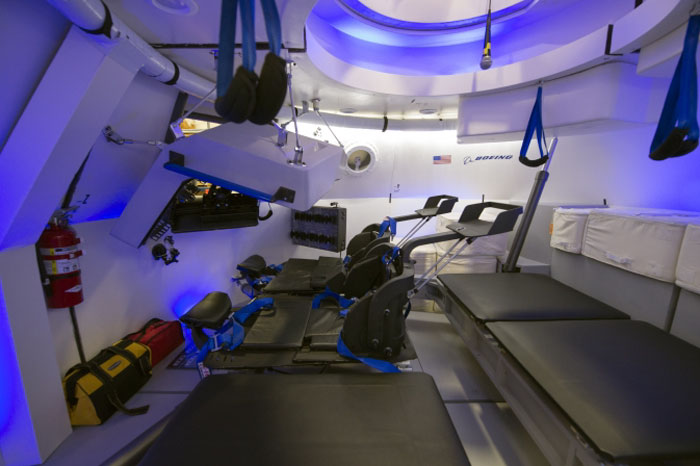
This is an interior view of The Boeing Company's CST-100 spacecraft, which features LED lighting and tablet technology.
.
Quelle:NASA
